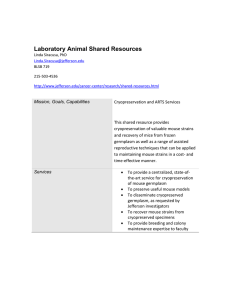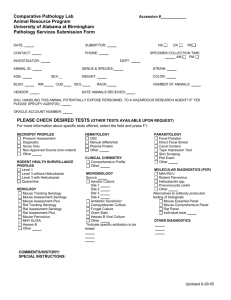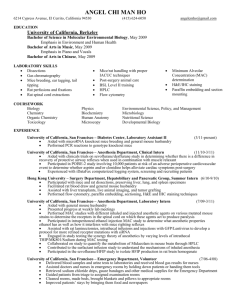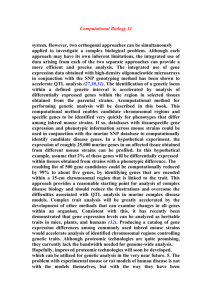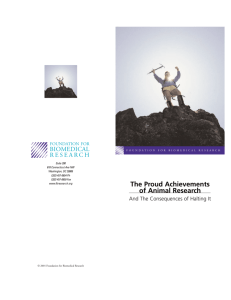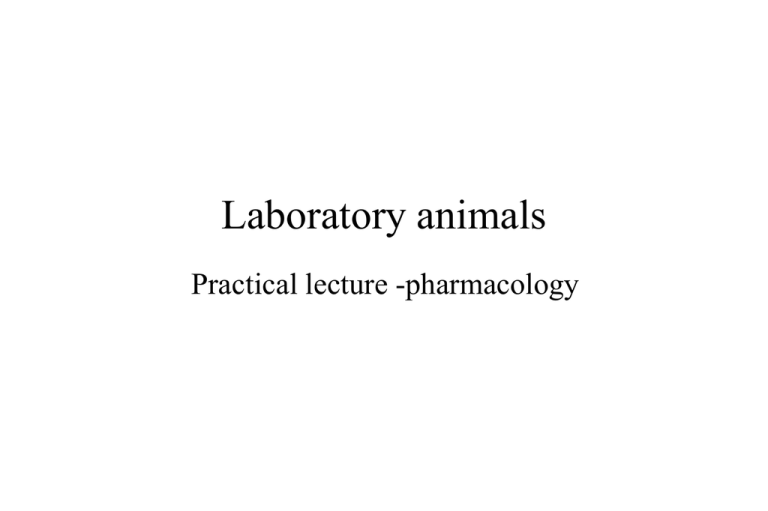
Laboratory animals
Practical lecture -pharmacology
Handling of animals
Experiments will generally be performed on live
animals, and these are to be treated kindly and
handled with care. Animal research is the keystone
of medical progress.
Such studies provided the foundation of the current
knowledge concerning the functions of the body
The Importance of
Animals in Biomedical Research
Because of biomedical research both humans
and animals now have:
•
•
•
•
•
•
Life-saving surgical procedures;
Cancer therapies;
Organ transplantation;
Vaccines;
Safe consumer products
Treatments and cures for countless other medical disorders and
diseases.
The Importance of
Animals in Biomedical Research
Why are animals used in research?
• organs and body systems similar to humans and other
animals;
• susceptible to the same diseases that affect humans;
• short life span allows animals to be studied throughout their
entire life;
• environment easily controllable to keep experimental
variables to a minimum;
The most important species of laboratory animals
• Mouse – most frequently used. Pharmacology, genetics of mammals, virology, models of
human diseases
• Rat – physiology of cognitive processes, behaviour, models of diabetes
• Rabbit – serology, insulin quantification, pyrogens quantification, tests of irritable effect of
chemical substances on the cornea
• Cat – study of CNS and respiratory system
• Dog – e.g. beagle, use in electrophysiology, neurophysiology
• Guinea-pig – in microbiology and serology, physiology of the auditory system
• Hamster - genetics
• Pig – training of surgical techniques
• Primates – chimpanzee – use in neurology, virology, behaviour
• Frog – physiology of blood circulation, electrophysiology
• Fish
5
MICE:Lift the mouse by grasping the caudal end with the
right hand and allow it to grip the wire mesh of the
cage with its fore legs.With the left hand, grasp the
nape of the animal !s neck between the thumb and
index finger. The mouse is now ready for injection.
RATS:- procedure for handling is same as mice and
can be handled with a minimum of effort or with
difficulty, depending on the treatment which they
receive. If the rat is treated roughly, it will become
vicious and difficult to handle,
Guinea pig:- is a very tame animal which presents
no difficulty in handling. most injections may be
made easily by using one hand to hold the pig firmly
against your body. These animals are extremely
susceptible to infection, therefore precaution
regarding sterility should be observed during
injections or surgical procedures.
Rabbits
rabbits should not be lifted by ears. Grasp the
loose skin the nape of the neck with the left hand,
the buttocks with the right hand and support the
animal close to your body.
keep in mind that rabbits do not normally utter
sound they will only emit cries when in severe
pain*
•
•
•
•
•
•
•
•
Signs of Pain and Distress in
Rodents
Decreased activity
not grooming
Hunched posture
Rapid shallow Breathing
“ Red tears “ albino rats”
Vocalization
Feed and/or water refusal
Weight loss
GENETICS OF LABORATORY ANIMALS
1.Isogenic = genetically defined strains
(isogenicity= genetic uniformity of all individuals)
2.Non-isogenic = genetically undefined strains
3.Genetically semi-defined strains
11
SYSTEMS OF BREEDING OF LABORATORY ANINMALS
Open – communication without the barrier
Barrier – the space with the animals is separated from external
environment and movements of animals, people and material are
controlled to eliminate possible introduction of factors from the
external environment (infection) – sterilization of coming water,
food, sawdust used for bedding, perfect personal hygiene of the
personal.
Isolator – the space for the animals is permanently separated by a
barrier from external environment as well as from people who
manipulate with the animals.
12
Scheme of barrier facility
13
Scheme of isolator
Isolators:
•
overpressu
re
•
underpres
sure
14
Female
Male
sex differentiation
Healthy
Mouse
Normal Rat
Normal
Mouse
Normal
Sick Mouse
Hunched posture
Hunched posture
“I’m so proud! All of my kids are going into research”

